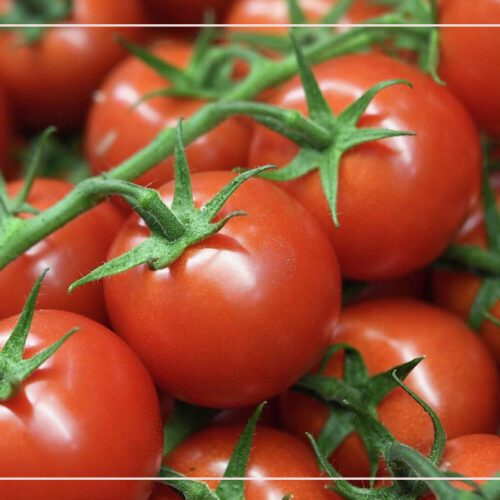
Learn How to Grow Delicious Cucumbers
Growing cucumbers can be a rewarding experience for any gardener. With the right knowledge and care, you can easily grow healthy cucumber plants in your own backyard. In this article, we will discuss the basics of cucumber care and provide some helpful tips on how to grow delicious cucumbers successfully. We will also cover some common mistakes to avoid when planting cucumbers so you can get the most out of your crop.
Home gardeners now have an easier job growing cucumbers, thanks to improved varieties that are resistant to many of the diseases and itchy symptoms that used to plague them. Not only that, but you can expect sweeter and bigger cucumbers from your home garden!
Agricultural scientists have come up with solutions to the mentioned issues. It’s now possible to find cucumbers that are disease-proof, seedless, and have no burps and thin skins while also tasting better. Furthermore, “Gynoecious” species make the fruit-setting higher, resulting in greater harvest yield.
Preparation tips
Soil preparation
- Cucumbers thrive in warm and humid conditions. A light frost is enough to wipe them out, while too much heat can make the leaves wither and the fruit unpalatable. Make sure to select a spot with full sun exposure in your garden for ideal growth.
- If you’re looking to maximize your garden space, cucumbers are a great choice. These melon family members can be trained to climb fences or grow on trellises if you don’t have enough space for one plant that requires up to nine square feet of area.
- Cucumbers can grow in many types of soil and will produce more if planted in clay. But for an earlier harvest, it’s best to opt for sandy soil. An ideal pH level for the best growth is between 5.5 and 7.0.
- Regardless of your soil type, cucumbers will perform best if you give them some compost and manure. Dig 1 to 2 inches of compost such as Growthmax into the garden before planting cucumbers. It maximizes growth during the vegetative state and induces better flowering and fruiting. If the soil pH level is below 5.5, adding lime to it can help amend it.
Solve weeds problem
- Cucumbers are sensitive to weeds and cultivation, which can easily damage their shallow and fine roots. To avoid this, you should start mulching the plants once they reach around 6 inches in height. This will provide them with the necessary protection from weeds and other factors.
- It’s recommended to put on a layer of untreated grass clippings around your plants each week, which serves as an inexpensive, biodegradable mulch. However, you should be aware that the number of clippings you apply should not exceed 1 inch per application, or else the grass may form an uncomfortable and smelly mat.
- Another easy way to get started with planting is to cover the soil with black plastic and secure it with clips. Don’t forget to cut holes for the seeds. However, be aware that this type of mulch absorbs a lot of heat from the sun during summer. This could be highly dangerous for plants. Check out our Growbag product for more details.
- Ensure you plan your planting schedule in such a way that plants are 12 inches or taller by the time summer arrives. Doing this will give them enough coverage to shade the plastic, hence keeping it cooler.
Cucumber diseases and pests
- Cucumber beetles are an ever-growing threat to cucurbit vegetables, such as cucumbers, melons, and zucchini. These tiny insects chew through leaves and vines of vegetables, causing extensive damage. Not only do they destroy the plant itself, but they can also spread diseases. This includes wilt or mosaic that can further diminish its yields. This is why it’s important for farmers to take preventive measures in order to protect their crops from this destructive pest.
- Make sure to check your garden daily for cucumber beetles. They can be found in the cucumber flowers and under the leaves. You should manually remove any that you see and dispose of them in a bucket of soap. If there is a large infestation, then you may need to use rotenone spraying or put some netting over your plants when they are still young.
- If you live in an area prone to certain plant diseases, it’s important to choose cucumber varieties that are resistant to them. Common illnesses such as powdery mildew, anthracnose, and leaf spot can ruin a crop if growers don’t take the proper precautions. Fortunately, there are several cucumber varieties that have been bred for disease resistance. So, gardeners can continue to enjoy their bounty without worry.
Tips for better harvest
- Cucumbers are demanding plants, with their big leaves, flowers, and produce. Adding a nitrogen fertilizer – like Add Life – one week after its bloom and repeating it three weeks later can help them flourish. It’s best done during the growing season to get the most benefit possible. Be sure to strike the right balance when caring for your plants; while it’s nice to have plenty of greens, too much can mean fewer fruits.
- Make sure to harvest cucumbers at the right time. Generally, they should be around 4-6 inches long (depending on the variety) for the best taste. Cutting them off with a knife is recommended as it avoids damaging the plant, and this length provides a younger and tastier cucumber than if you were to let them age on the vine which results in an unpleasant bitterness.
- Once your cucumbers have begun yielding fruit, you need to keep harvesting them regardless of your needs. If you don’t keep picking them, the production process comes to a halt and the harvest ends there. Placing them in a perforated plastic bag in the refrigerator can achieve up to one week of shelf life.
Related topic
Better Date Palm Trees
Common Questions
-
Do cucumbers need a lot of sunlight?
Sun is an essential part of cucumber’s growth. It should be exposed to 8 or more hours of direct sunlight for a significant yield. Insufficient sunlight can cause lesser fruits and poor harvests.
-
Does pruning cucumbers increase yield?
Pruning cucumber plants can optimize their fruit production. By removing the extra vines, the energy that was once used for their growth will be channeled toward producing healthy fruits instead of useless stems and leaves. This technique guarantees a higher yield of better-quality fruits.
-
How do you grow sweet-tasting cucumbers?
To ensure the optimal health of your cucumber plant, it is important to provide consistent moisture levels and mulch for protection. Choose smaller fruit since they become bitter as they grow bigger. Furthermore, cucumbers thrive in soil with high organic matter and full sun exposure.





